Mont Saint-Michel lies on an approx. 100 m high rock in the middle of the mudflats of the Normandy. At low tide one could reach it dry-shod, at high tide it forms an island.
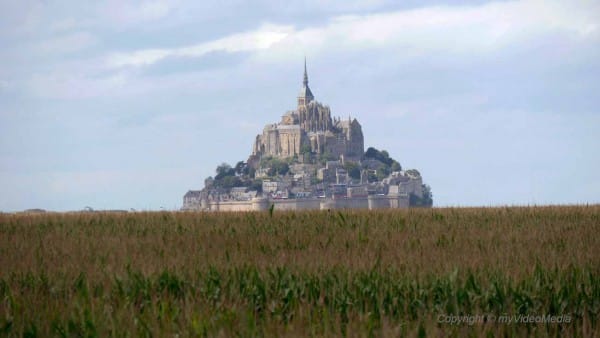
The magnificent architecture of the monastery appears in most different facets depending on position of the sun and weather.
The interplay of light and shadow of the passing clouds let it appear in different colors and cause completely contrasting atmospheres.
Please watch the 4k UltraHD video
You are currently viewing a placeholder content from YouTube. To access the actual content, click the button below. Please note that doing so will share data with third-party providers.
More InformationHistory
Beginning of the 8th century, Aubert of Avranches built a first monastic establishment on the rock. During the Viking attacks, the island which withstood as a bulwark at the border between Normans and Brittany, was left to the Bretons, after the Normans had taken the peninsula Cotentin. A first church was built and the island was expanded fortress-like.
In 965, the Benedictines founded the monastery and continued the expansion of the place. During the Hundred Years’ War, the artillery of the Englishmen destroyed the town, but could not take the island. 1469, the newly founded Order of Knights of Saint Michel chose the abbey as their seat. The abbey developed into an important pilgrim place.

From 1790 to 1969, the Benedictines left the monastery. During the French Revolution, the abbey was converted into a prison and got the ridiculing name Mont-Libre (mountain of freedom). Within the following decades it acquired the reputation as most abominable prison of France.
The buildings became increasingly dilapidated . Only with Victor Hugo began a counter-movement. The prison was closed and the Mont Saint-Michel was declared a national monument (monument historique) in 1874 . Today, the religious of the community of Jerusalem live in the monastery and Saint Michel has become a magnet for tourists.
Today
Shortly before our visit the newly built bridge, designed by the Austrian architect Dietmar Feichtinger, has been opened to pedestrians.
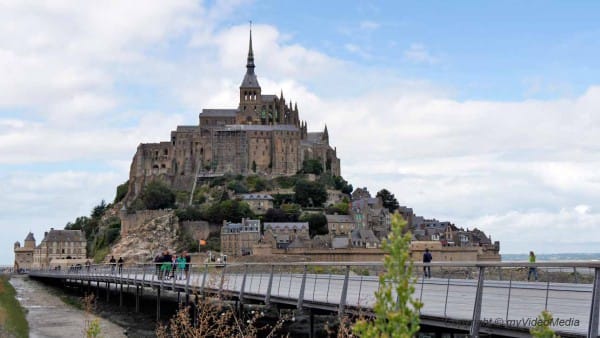
After the old dam is removed, the bridge will make the island accessible, independent of the tides, and prevent sedimentation of the island.
The tides are very strong, the tidal range is up to 14m. Since the mudflats are very shallow, very high velocities of flow can be observed, as you can see in our video.
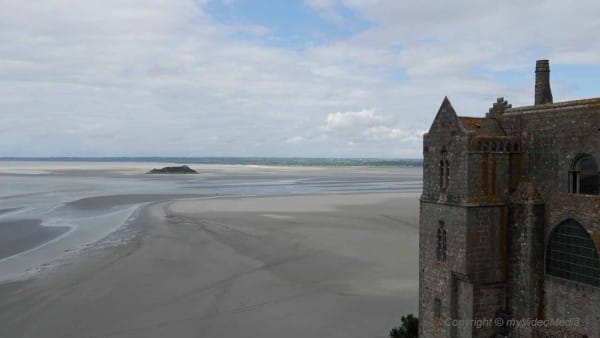
The village at the foot of the abbey has fully opened up to tourism.
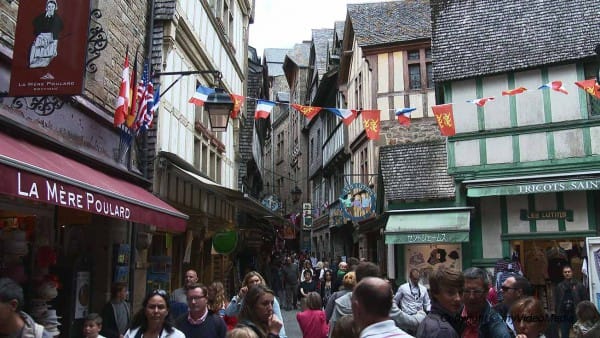
An endless stream of tourists wander through narrow picturesque lanes. After a few stairs one reaches the Abbey, while the spacious surrounding countryside come into view.
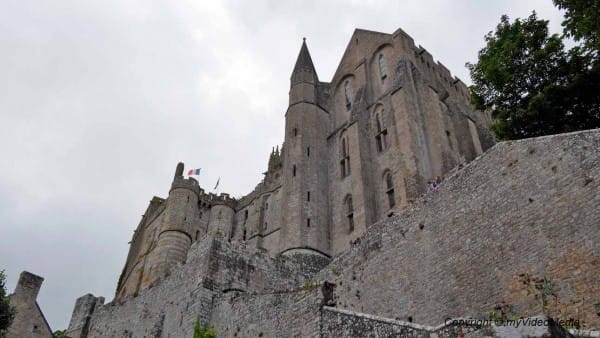
From the terrace of the abbey you can best observe the mudflats. The Romanesque-Gothic abbey impress with its solid substructure on which the Gothic church rises into the sky. The interiors also surprise by its dimensions.

We leave the island deeply impressed, not only because of its fantastic architecture, but also because of its perfect integration into the surrounding her nature.
Since 1979, the Mont-Saint-Michel and the bay belong to the UNESCO World Heritage Sites. In 1998 it was listed as part of the World Heritage Camino de Santiago in France.
Please read on > St Malo – the walled city
Text, photos and video: Copyright © myVideoMedia
4k beautiful images, but a shame that we can not download the movie in this quality because the bandwidth does not advantage of these beautiful images
Thank you for feedback
It’s a shame, but the Telecommunications connections are today
not as they should be, but there’s still hope
.. someday…